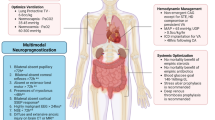Abstract
Cardiac injury following blunt chest trauma is common in motor vehicle accidents due to a crush or blast injury. Severe cardiac trauma is associated with a very high mortality. If a cardiac injury develops several weeks after non-penetrating chest trauma, establishing a causal link between the traumatic event and the cardiac injury becomes complicated. This article reports a case of fatal delayed hemopericardium and hemothorax following a motor vehicle accident including blunt chest trauma 34 days prior to death. The cardiac injury was caused by displacement of a sharp irregular fragment of one of the decedents fractured ribs and the primary defect was sealed by blood clots. Subsequent bleeding occurred when the thrombus was displaced. Since the incidence of blunt high-energy chest injuries is relatively high, heart and large vessel injuries must be taken into account and a comprehensive examination needs to be done in order to prevent the delayed development of fatal complications.


Similar content being viewed by others
References
Gosavi S, Tyroch AH, Mukherjee D. Cardiac Trauma. Angiology. 2016;67:896–901.
Dowd MD, Krug S. Pediatric blunt cardiac injury: epidemiology, clinical features, and diagnosis. J Trauma Acute Care Surg. 1996;40:61–7.
Brathwaite CE, Rodriguez A, Turney SZ, Dunham CM, Cowley R. Blunt traumatic cardiac rupture. A 5-year experience. Ann Surg. 1990;212:701–4.
Pooniya S, Behera C, Mridha AR, Swain R. Cardiac rupture delayed for a week in an asymptomatic child following blunt trauma. Med Sci Law. 2016;56:217–20.
Biffl WL, Moore EE. Blunt cardiac injury. In: Karmy-Jones R, Nathens A, Stern EJ, editors. Thoracic trauma and critical care. Boston: Springer; 2002. p. 281–8.
Holanda MS, Domínguez MJ, López-Espadas F, López M, Díaz-Regañón J, Rodríguez-Borregán JC. Cardiac contusion following blunt chest trauma. Eur J Emerg Med. 2006;13:373.
Olsovsky MR, Wechsler AS, Topaz O. Cardiac trauma: diagnosis, management, and current therapy. Angiology. 1997;48:423–32.
Prêtre R, Chilcott M. Blunt trauma to the heart and great vessels. N Engl J Med. 1997;336:626–32.
Glancy DL, Yarnell P, Roberts WC. Traumatic left ventricular aneurysm: cardiac thrombosis following aneurysmectomy. Am J Cardiol. 1967;20:428–33.
Van Wijngaarden M, Karmy-Jones R, Talwar M, Simonetti V. Blunt cardiac injury: a 10 year institutional review. Injury. 1997;28:51–5.
Aaland MO, Sherman RT. Delayed pericardial tamponade in penetrating chest trauma: case report. J Trauma. 1991;31:1563–5.
Yetter E, Brazg J, Del Valle D, Mulvey L, Dickman E. Delayed cardiac tamponade: a rare but life-threatening complication of catheter ablation. Am J Emerg Med. 2017;35:803.e1–3.
Solomon D. Delayed cardiac tamponade after blunt chest trauma: case report. J Trauma. 1991;31:1322–4.
Rudinská LI, Hejna P, Ihnát P, Tomášková H, Smatanová M, Dvořáček I. Intra-thoracic injuries associated with cardiopulmonary resuscitation–frequent and serious. Resuscitation. 2016;103:66–70.
Pastor BH, Betts RH. Late symptoms due to traumatic hemopericardium. N Engl J Med. 1961;265:1139–43.
Acknowledgements
We would like to thank Jana Vachová for skillful technical assistance.
Author information
Authors and Affiliations
Corresponding author
Ethics declarations
Conflict of interest
The authors declare that they have no conflict of interest.
Ethical approval
All procedures performed in studies involving human participants were in accordance with the ethical standards of the institutional and national research committee and with the 1964 Helsinki declaration and its later amendments or comparable ethical standards.
Additional information
Publisher’s Note
Springer Nature remains neutral with regard to jurisdictional claims in published maps and institutional affiliations.
Rights and permissions
About this article
Cite this article
Dokoupil, M., Marecová, K., Uvíra, M. et al. Fatal delayed hemopericardium and hemothorax following blunt chest trauma. Forensic Sci Med Pathol 15, 272–275 (2019). https://doi.org/10.1007/s12024-018-0069-5
Accepted:
Published:
Issue Date:
DOI: https://doi.org/10.1007/s12024-018-0069-5




